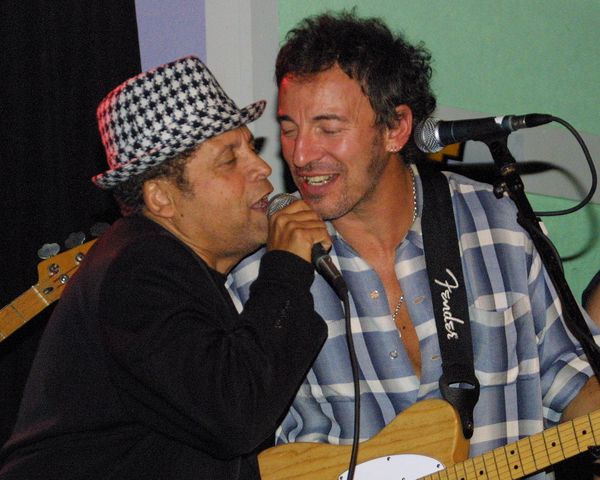Claire Jeffreys brilliant DOC NYC Audience Award-winning (and a highlight of the 14th edition) Garland Jeffreys: The King Of In Between (executive produced by Steven Van Zandt, Sam Pollard, Evan Oppenheimer, Blair Foster, Rémi Grellety,, and Danny Zelisko) has on-camera interviews with Bruce Springsteen, Laurie Anderson on Lou Reed’s support, Harvey Keitel, Vernon Reid, Alejandro Escovedo, Alan Freedman, Robert Christgau, Graham Parker, Michael Cuscuna, David Hajdu, Roger Guenveur Smith, and Phil Messina sharing their insights on Garland Jeffreys, whom Springsteen calls a great singer songwriter in the tradition of Bob Dylan and Neil Young.
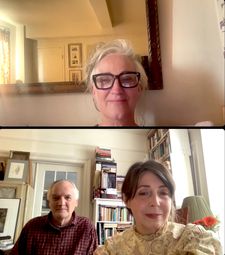 |
| Claire Jeffreys with Ed Bahlman and Anne-Katrin Titze on Garland Jeffreys: “He went out with Bette Midler when she was doing The Continental Baths and he dated Alice Walker of The Color Purple.” |
There are clips of a number of dynamic performances by Jeffreys, showing us his many incarnations and his determination to keep the faith as he goes through dealing with record labels unable to grasp and market the immense talent that they have signed. We learn how Gene Simmons from KISS was an influence in Matador becoming a huge hit single in Europe and see Jamaica Kincaid read from her 1977 Talk of the Town column in The New Yorker on her encounter with Garland.
We have wonderful memories from his wife Claire, the director, and Savannah Jeffreys, their daughter, that show the playfulness of a man who has kept his dignity while dealing with the progression of cognitive decline that was beginning to appear when the filming started.
Garland Jeffreys was named Rolling Stone magazine's Best New Artist for 1977 and as Bruce Springsteen says in Garland Jeffreys: The King of In Between: “A very powerful story, well told, does not go away so easily or so quickly. It remains even if it’s in the shadows. It remains, it has its power, it speaks, it continues to speak, and people find that kind of work and are drawn to it. It will never lose its power over the years.” Garland Jeffreys legacy will live on.
Music producer and 99 Records founder, Ed Bahlman, who first met Garland in the late Seventies when he came into his shop at 99 MacDougal Street in Greenwich Village, joined Claire and me on Zoom during our in-depth conversation on Garland Jeffreys: The King of In Between.
Anne-Katrin Titze: Good morning!
Claire Jeffreys: Hello!
AKT: How is Garland doing?
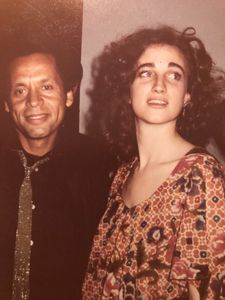 |
| Claire Jeffreys on meeting Garland Jeffreys in 1981: “It was at the beginning of his tour and the backing band was The Rumor, the Graham Parker band.” Photo: courtesy of Claire Jeffreys |
CJ: He’s not doing well at all. He has very advanced Alzheimer’s right now and that’s why he didn’t attend the premiere, that’s why he’s not speaking. And it’s really very - I don’t want to use the word tragic, but there should be a word between tragic and bitter-sweet. He knew that we were making the film because you can see in some of the interviews when we started he was pretty cogent.
But there was a certain period where we were getting more into the story and we realised he couldn’t articulate some of the things that needed to be said. That’s why I was saying some of the things in the film. You know, it’s really really sad and a few people have said to me, why didn’t we make a film about that. And I said, well, that’s not the story I set out to tell.
AKT: You started the film many years ago, didn’t you?
CJ: Yes, about eight years ago. There were a lot of stops and starts because I was financing it myself. Covid, lots of things just held it up. Needless to say, his situation was very consuming. Anyway, I decided not to include it in the film. I wanted to end on a note - which was real - that he had come to a place of acceptance.
AKT: It would have made a totally different film.
CJ: Totally different.
AKT: Have you seen Maite Alberdi’s The Eternal Memory, which was also in DOC NYC?
CJ: No.
AKT: It is very strong and deals with the issue of memory loss and a couple dealing with it.
CJ: I decided to use talking about the film as an opportunity to talk more publicly about his situation because I had not made any sort of a public statement about it. But I am beginning to.
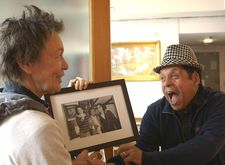 |
| Garland Jeffreys clueing in Laurie Anderson on the Lou Reed, Garland Jeffreys, Alan Freedman photo by Chuck Pulin Photo: courtesy of Claire Jeffreys |
AKT: The title of your film, the King Of In Between, is fitting on different levels. Did you ever come across the mythological figure Legba?
CJ: No!
AKT: Legba is a trickster deity, his realm is doorways and the in-between. Sometimes he is the spirit of divination. He seems to know something about the future, he is the deity of language and he likes to wear straw hats. I kept thinking about Legba, who exists in different countries, different continents, while watching your film.
CJ: That is fascinating! Legba! I’ve never heard of that; I will definitely look that up. Obviously in Garland’s mind it’s very much about racially not fitting in in either camp, so to speak. I don’t know if I said it in the film, but in his mind, by saying he’s the king, he’s saying, well I may be in this place but I’m going to own it, I’m going to claim that, that’s me. And I think as a younger man he was very baffled and confused and struggled with that. And as he got older he sort of accepted that that was who he was, there was nothing he could do about it.
Needless to say, the entire world has become much more comfortable with being a bi-racial person than it was when he was a young man, say in 1950 in Brooklyn. In the area where he grew up, you were Italian, you were Black, you were Irish, you were Chinese, but there wasn’t a lot of bi-racial people. Today, it’s so much more interracial relationships, superstars, it’s just become so much more - I hate the word - mainstream. The whole concept of the “tragic mulatto” - that’s an American literary phrase. Did you see that movie Passing [directed by Rebecca Hall]?
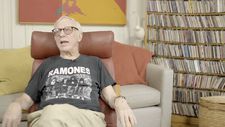 |
| Robert Christgau on Garland Jeffreys and racial identity: “Garland was messing with this racial complexity. I always admired him for doing it.” Photo: courtesy of Claire Jeffreys |
AKT: Yes!
CJ: That was a Harlem Renaissance novel [1929] by Nella Larsen. James Weldon Johnson, you know, there’s a lot of writers that wrote about it. I just don’t think there were that many musicians who were writing about it.
AKT: There’s a moment in your documentary when someone says that for a while Garland pretended to be Jamaican, although he was born in Sheepshead Bay. It reminded me of the first Black supermodel, Donyale Luna.
CJ: I just watched a documentary about her! I had never heard of her!
AKT: I interviewed the director, Nailah Jefferson [Donyale Luna: Supermodel] and we spoke about that, that so many people don’t know her. I thought about her making up that she is not from Detroit, Michigan, but that she might be coming from the moon.
CJ: To be more exotic than you really are. As you are treated like an exotic, you might as well. I thought that was a great moment, too. The reason I wanted Phil [Messina] in the film was because he was the only person that really could speak to Garland as a very young guy who would for a time go around saying stuff like that. It’s amazing what you have to go through to try to make it.
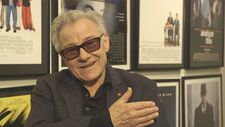 |
| Harvey Keitel on Garland Jeffreys: “We both went to Abraham Lincoln High School in Brooklyn.” Photo: courtesy of Claire Jeffreys |
AKT: I would like to introduce you to someone who knew Garland in the Eighties. Ed Bahlman of 99 Records is here to say hello.
CJ: Oh cool! Hello there, how are you?
Ed Bahlman: Amazing job introducing, reintroducing Garland’s music and performances, the clips you chose! I did not know his career before I started 99 in ’78. I only sold imports and independent records and no major label American music, so I didn’t have his recordings in the shop. He would come in because I also sold reggae and African music.
CJ: Oh, yeah.
EB: I had two turntables and a mixing board. I would play him Lovers Rock and then hearing about his reggae influences! It was wonderful to hear.
CJ: Oh thank you!
EB: You did a great job, because I did not know his career prior.
CJ: Most people don’t. I got to be honest, I didn’t know some of it either.
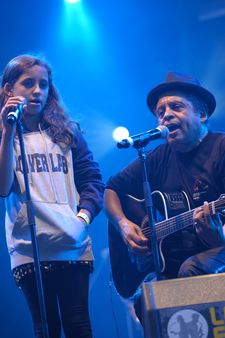 |
| Savannah Jeffreys performing with her father Garland Jeffreys Photo: courtesy of Claire Jeffreys |
EB: Do you have his record collection?
CJ: You know, I was going through it recently because my daughter [Savannah]’s boyfriend is beginning to DJ a little bit, so I found some of these obscure reggae vinyl. I’m sure most of them are still in storage or in the apartment. He had some pretty neat stuff.
EB: He liked Dennis Brown, Gregory Isaacs.
CJ: Yes. Night Nurse.
EB: They are smooth. Garland is super-smooth, too. He was always upbeat when I’d run into him or he’d come into the shop. Never down.
CJ: Yes, very social, as a matter of fact with the Alzheimer’s now it’s like people cannot equate the fact that he used to be - he was always hugging everyone and joking and laughing. He could never remember anyone’s name even back in the day, but was always very happy to see anybody. It’s really very sad that he’s not able to do that anymore. Anyway, very nice to see you and how neat!
EB: Another great scene is when Savannah asserts her independence. That was brilliant.
CJ: You know, that was for a Dutch TV show. The filmmaker and the cameraman were in the apartment and that was all spontaneous. They were doing a show about hits in The Netherlands. And that song Matador was a big hit, so they asked if they could do an episode on it. And she walked in, it was hilarious. I didn’t even realise that she said something like “Dad, I’m busy.” Suddenly she wanted to do her homework. I never heard her say, I have a lot of homework.
EB: Another great memory is Gene Simmons. He is, believe it or not, on camera in another film at DOC NYC.
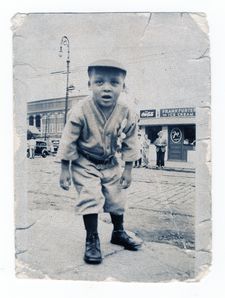 |
| Garland Jeffreys at Ebbets Field for Jackie Robinson’s first game as a Brooklyn Dodger Photo: courtesy of Claire Jeffreys |
CJ: I think I saw a clip of that. What is that?
EB: The Disappearance of Shere Hite. Because they lived in the same building. He talked about knowing her way back when on East 64th Street.
CJ: Unreal! I think of you live long enough and you lived in New York, everything is that cliché, six degrees of separation. I was saying to somebody that Tom Freston, who used to run MTV, came to one of the screenings and one of my consulting producers said, my first job when I came to New York was as a temp working for him. Everything is really enmeshed.
EB: It’s nice to see that Stevie Van Zandt is involved too.
CJ: He came in toward the end. I had wanted him to be involved and he was very busy. Then at some point I came back again. That was another lesson I learned in making this, it’s persistence. Same thing with getting the Springsteen interview. That took a lot of persistence. Finally I cracked the code.
AKT: What about Harvey Keitel? He says a slightly mysterious sentence that I still haven’t understood. “Heaven looks down from the Brooklyn Bridge.” Heaven starts there and there is nothing up above? What does he mean?
CJ: I do not understand most of what Harvey said. It was a bit of a mystery. And then when he said that, I had never heard that phrase before, probably will never hear it again. When he said “I was there in the early tumultuous days of their relationship,” I’m thinking, what was so tumultuous? I mean, we were fighting a lot, but who isn’t? His quotes were very mysterious but he was again another New York figure that really added a certain something.
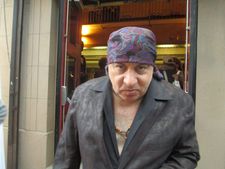 |
| Steven Van Zandt is an executive producer for Garland Jeffreys: The King Of In Between Photo: Anne-Katrin Titze |
EB: I’m a Brooklyn boy too, so I understand in the neighbourhood it’s diverse, but certain blocks you did not walk down if you were not Italian, or down the hill if you were not Puerto Rican. If they didn’t know who you were and if you didn’t have a meeting place at the park - that’s where you were meeting people outside your neighbourhood.
CJ: I’m from New Jersey so I only know that in a historical sense. I think to some extent that’s still a little bit true.
EB: Yes.
CJ: Everybody likes to think of New York as this melting pot, but the melting only happens, like you say, in isolated moments. It’s not wholesale melting by any means.
EB: The photograph with Garland with the baseball cap on, very young, I immediately thought of Jackie Robinson. I couldn’t believe you went there and that happened.
CJ: Again, he would say “I was there the day that he broke the colour line” [in 1947]. I thought, come on! Then the photograph appeared and it was the album. When I was making the film I was thinking that maybe I could make something of the sort of Zelig nature of him being in certain places.
I mean, he went out with Bette Midler when she was doing The Continental Baths and he dated Alice Walker of The Color Purple. And there was Peter Max in the yoga days. There was even a photo where Carlos Santana jumped on stage and played with him in London. But I thought he’s Zelig-y enough without me highlighting it.
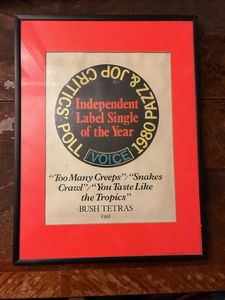 |
| 99 Records Bush Tetras Too Many Creeps Independent Label Single of the Year Photo: Anne-Katrin Titze |
EB: It works. Another inclusion into the film is the Max’s Kansas City juke box. I have an anecdote on that too. Peter Crowley, the manager who ran the club, he came into 99 when Bush Tetras did Too Many Creeps, the Independent Label Single of the Year [1980 Pazz and Jop Critics’ Poll] in the Village Voice. And he said, hey Ed, I have a hole-puncher, give me a copy of that, I’ll put it on the juke box - you need a big hole for a juke box. He came in a week later and said, guess which song is the most played? Too Many Creeps at Max’s.
CJ: I love it.
EB: So when I heard that with Garland I completely understood.
CJ: That was a big deal. Huge! There was a song on one of his later albums called “The Contortionist” and it was about sort of trying to get inside the world of the cool Max’s people. Lou Reed is singing backup on that song. It’s about how he always felt like his face was pressed up against the glass and trying to get accepted into that cool circle. I mean, life is high school, let’s face it. That Wild in the Streets moment when he felt he could walk in there and it would be playing was huge for him.
EB: The framed photograph that Laurie [Anderson] holds up, is that Alan Freedman?
CJ: Yes, the photo is by Chuck Pulin. That was another detective job to track down, because Chuck Pulin’s Estate is owned by two different entities. Laurie was really tickled by that photo.
EB: And expressing that that was definitely not the only time of Lou responding that way.
CJ: It’s so Lou, it’s perfect.
EB: One-on-one with Lou he was present.
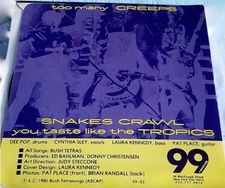 |
| Bush Tetras Too Many Creeps 99-02 Photo: Anne-Katrin Titze |
CJ: I think to some degree it was a mask that he needed. But I think to some degree it was real, he pulled it off so well.
EB: One of the bands I produced, ESG, four sisters from the South Bronx, did a Radio France live broadcast at Sorcerer Sound and the other performer was Lou Reed. He came in with an entourage of seven, eight, nine people and they couldn’t talk to him.
And they weren’t allowed to see him from the recording studio; I was the only one in the control room besides the engineer while it was broadcast live to France. Then I came out because they were wrapping it up and I said “Lou’s coming out, nobody laugh!” And they all started that weird smile because they knew that they were to not react.
CJ: So funny, that’s like you were not allowed to look at Prince. People in the hallway, you’d have to look down.
EB: Madonna had that policy also.
CJ: Bush Tetras, are they playing again or am I imagining that?
EB: Yes! Do you know Lucy Sante, formerly Luc Sante, now Lucy?
CJ: I know who he is but I don’t know him personally.
EB: We’re in touch with her and she’s in touch with Cynthia and Pat, the singer and guitar player.
CJ: Pat Place and Cynthia Sley, yes.
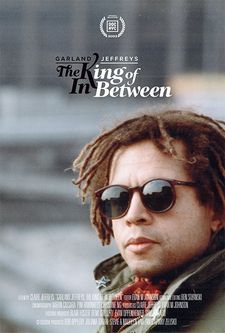 |
| Garland Jeffreys: The King Of In Between poster |
EB: You mentioned The Contortionist and I’m thinking the Contortions.
CJ: Ivan Julian, I was thinking of having him in. Again, one thing I learned about making a film is you can’t have too many talking heads. I tried to be judicious. We had an interview with Keith Morris of The Circle Jerks because they covered Wild in the Streets. It was really distracting so we didn’t use it.
EB: Getting Vernon Reid was a really good get.
CJ: Again, tons of other great stuff he said but it was sort of too far afield but he’s a really good talker.
AKT: I loved when you describe how you and Garland met! You left a number of gaps, too. When and where was that? The tour bus makes you think that it wasn’t in New York.
CJ: It was actually in New Jersey in a club in the famous town of Asbury Park, which is where Springsteen and that whole scene was. It was at the beginning of his tour and the backing band was The Rumor, the Graham Parker band. It was in a small club in New Jersey.
AKT: When was that?
CJ: 1981. If you had said to me that night that you’d be here 40-something years later talking about a movie, I would have said come on! Life is really incredible the way it turns and goes. Sometimes I think about, what if I had never gone out into that parking lot? What if I stayed inside to use the ladies room, or something? Probably because I wanted a cigarette, literally. Life is just incredible when you think about the way things unfold, the chaos, the unpredictability of it and the fate of it. It’s amazing.
EB: Claire, give Garland a hug from me!
CJ: I will. I’ll see if it jogs his memory a little bit.
AKT: Thank you so much, Claire.
CJ: Thank you, that was really fun! This was a lot more fun than I expected!
Garland Jeffreys: The King Of In Between will be available online through Sunday, November 26.








